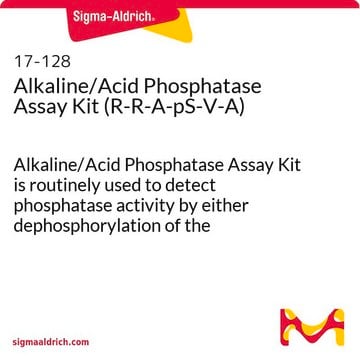The 86C and 86R kits have not been validated for use with frozen sections. The Specimen Collection section of the Instructions For Use advises the kit is intended for "Fresh blood or bone marrow films or samples anticoagulated with heparin may be used. AVOID EDTA." Customers working with cultured cells report the kit does seem to work. This finding has not been confirmed by our company. If the frozen sections have been decalcified, the expectation is that the kit will not work since it is likely the alkaline phosphatase enzyme was destroyed during the decalcification process, There are microtomes that can cut undecalcified bone, although they are not in common use. Really not sure if there are cryostats available that have the ability to cut undecalcified bone. If such a cryostat exists, in theory, the kit might work if the frozen sections are stained immediately after the cutting of the frozen sections. The alkaline phosphatase enzyme is not preserved at -20°C. Were the frozen sections to be stored at -80°C, there is the possibility the alkaline phosphatase enzyme might be preserved. Again there has been no validation for whether the kit can be used to stain frozen sections.
86R
Leukocyte Alkaline Phosphatase Kit
based on naphthol AS-BI and fast red violet LB
Wybierz wielkość
1980,00 zł
Wybierz wielkość
About This Item
1980,00 zł
Polecane produkty
Poziom jakości
okres trwałości
Expiry date on the label.
IVD
for in vitro diagnostic use
dilution
(for histology)
Zastosowanie
hematology
histology
Warunki transportu
wet ice
temp. przechowywania
2-8°C
Szukasz podobnych produktów? Odwiedź Przewodnik dotyczący porównywania produktów
Zastosowanie
Tylko elementy zestawu
- Citrate Solution (915) 50 mL
- FRV-Alkaline Solution (862) 10 mL
- Hematoxylin Solution, Gill No. 3 (kit only) 50 mL
- Naphthol AS-BI Alkaline Solution (861) 10 mL
- Sodium Nitrite Solution (914) 10 mL
Hasło ostrzegawcze
Danger
Zwroty wskazujące rodzaj zagrożenia
Zwroty wskazujące środki ostrożności
Klasyfikacja zagrożeń
Acute Tox. 4 Oral - Eye Dam. 1 - Met. Corr. 1 - Skin Irrit. 2 - STOT RE 2 Oral
Organy docelowe
Kidney
Kod klasy składowania
8A - Combustible corrosive hazardous materials
Temperatura zapłonu (°F)
Not applicable
Temperatura zapłonu (°C)
Not applicable
Wybierz jedną z najnowszych wersji:
Certyfikaty analizy (CoA)
Nie widzisz odpowiedniej wersji?
Jeśli potrzebujesz konkretnej wersji, możesz wyszukać konkretny certyfikat według numeru partii lub serii.
Masz już ten produkt?
Dokumenty związane z niedawno zakupionymi produktami zostały zamieszczone w Bibliotece dokumentów.
Klienci oglądali również te produkty
-
iPS細胞から分化誘導された骨の凍結切片をこのキットで染色すると骨は染まりますか?
1 answer-
Helpful?
-
-
Can the Alkaline Phosphatase kits in 85 or 85 series kits be used to stain paraffin embedded sections of bone?
1 answer-
The 86R kit, along with its possible replacements (85L1, 85L2, and 86C), is currently not available. These kits, part of the 85 and 86 series, are typically intended for use with peripheral blood and bone marrow. The Instructions for Use advise using fresh blood or bone marrow films anticoagulated with heparin, avoiding EDTA. Blood smears should be stained for enzyme activity within 8 hours after preparation, and films should be dried at least 1 hour before fixation and 3 hours post-fixation before freezing. While these kits are designated for peripheral blood and bone marrow, some users have utilized them for cultured cells and deparaffinized bone. However, the sensitivity of these kits for detecting alkaline phosphatase activity in paraffin sections of bone may be limited.
Helpful?
-
Active Filters
Nasz zespół naukowców ma doświadczenie we wszystkich obszarach badań, w tym w naukach przyrodniczych, materiałoznawstwie, syntezie chemicznej, chromatografii, analityce i wielu innych dziedzinach.
Skontaktuj się z zespołem ds. pomocy technicznej





![2-[4-(2-Hydroxyethyl)-1-piperazinyl]-ethanesulfonic acid Buffer substance HEPES EMPROVE® EXPERT](/deepweb/assets/sigmaaldrich/product/images/351/602/c50c8b6f-6bcd-4751-9064-2cc5cb47d00f/640/c50c8b6f-6bcd-4751-9064-2cc5cb47d00f.jpg)











